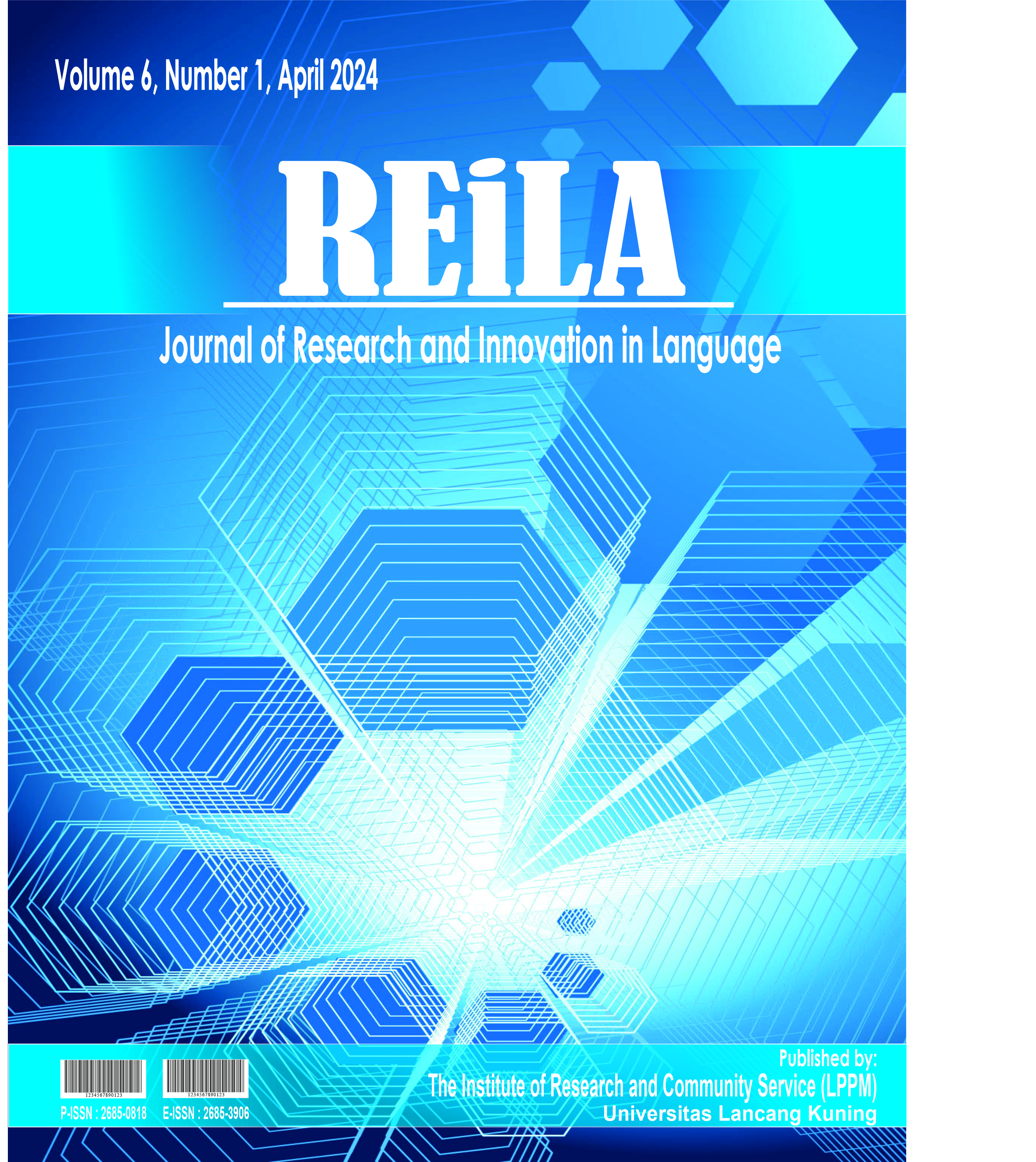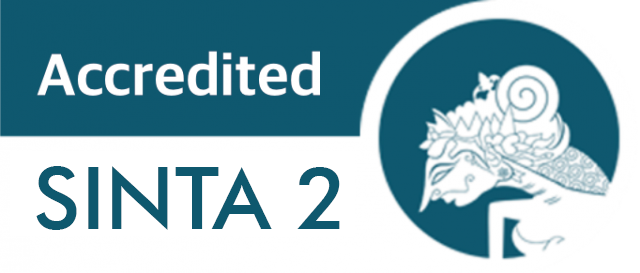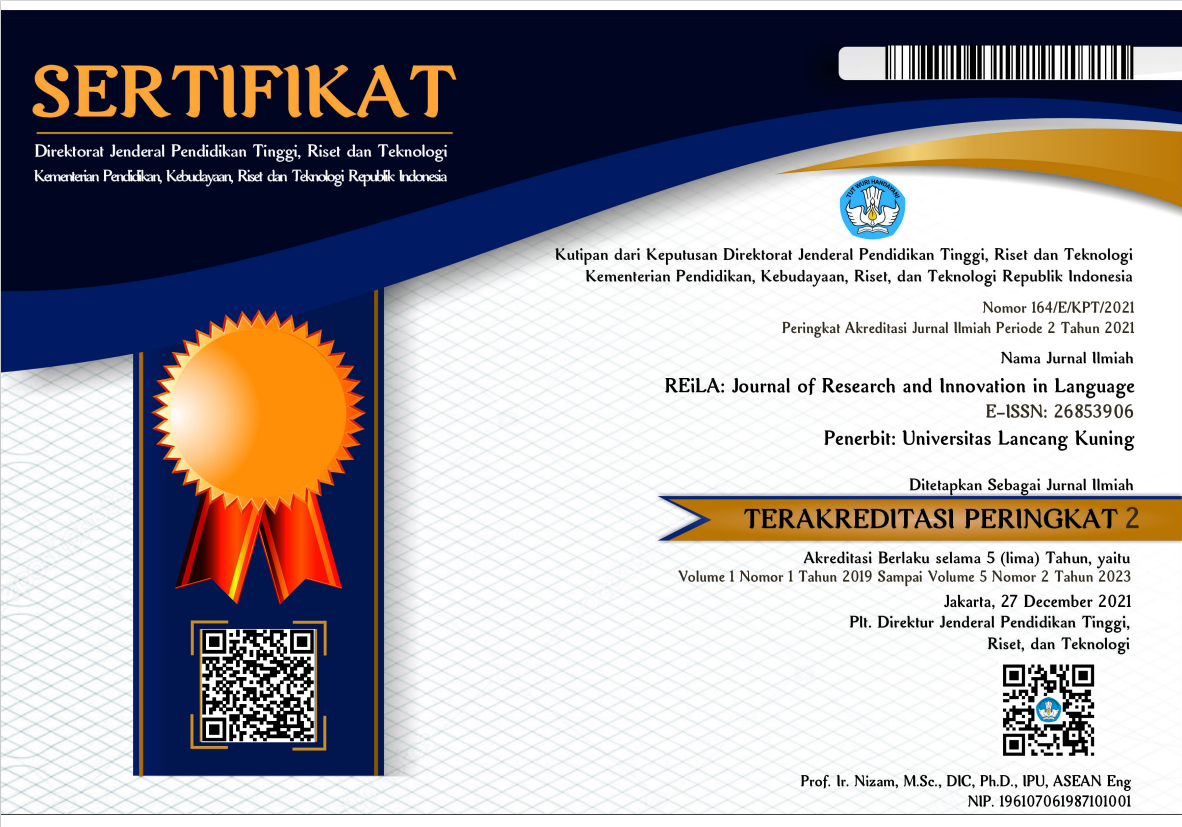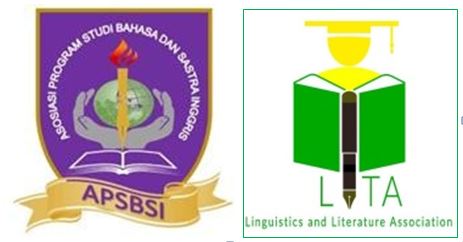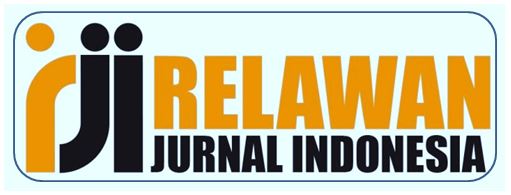Multimodal Text-Powered Interactive E-Module for Enhancing English Structure Learning
Abstract
This study aimed to develop an interactive e-module based on multimodal text for the Intermediate English Structure course in supporting digital learning at Universitas Riau, Indonesia. The research followed a systematic Research and Development (R&D) approach and applied the ADDIE (Analysis, Design, Development, Implementation, and Evaluation) model, which integrated the initial research techniques with final evaluation methods to ensure the effectiveness of the e-module. This study utilized purposive sampling techniques which involved 42 students and experts in media and materials. The development started with a thorough analysis of students’ needs, obtaining a score of 3.05 which indicated high necessity. The subsequent step involved designing the desired product, which is an interactive e-module containing multimodal texts, that is, various types of texts which include written texts, images, animated videos and interactive quizzes. The e-module consists of six units; each containing sections such as video-based explanation, text-based descriptions, illustrative examples, interactive quizzes, and chapter summaries. Validation of the e-module was carried out by material and media experts, resulting in scores of 3.73 (indicating very valid) and 3.77 (indicating very valid) respectively. Then, when tested to students, the results revealed a 'clarity of language use in the learning material' indicator is 3.57 (indicating very good), while the 'ease of use' indicator stands at 3.60 (indicating very good). Thus, these results suggest that the developed e-module exhibits excellent quality and is well-suited to serve as a digital learning resource for the Intermediate Structure course in the English department at Universitas Riau, Indonesia. Furthermore, this e-module also has the potential to transform how students learn. With combination of different types of content, the researchers have created a tool that can set a new standard for digital learning at Universitas Riau and beyond.
Downloads
References
Abdo, I. B., & Al-Awabdeh, A. H. (2017). Animated videos prove to be beneficial in teaching English grammar as EFL: A neurological study of how students learn and retain English grammar. Creative Education, 8(9), 1415-1423. https://doi.org/10.4236/ce.2017.89099
Afif, N. (2019). Pengajaran dan pembelajaran di era digital. IQ (Ilmu Al-qur'an): Jurnal Pendidikan Islam, 2(01), 117-129. https://doi.org/10.37542/iq.v2i01.28
Afrianto, A. (2018). Being a professional teacher in the era of industrial revolution 4.0: Opportunities, challenges and strategies for innovative classroom practices. English Language Teaching and Research, 2(1), 1-13. https://ejournal.unp.ac.id/index.php/eltar/article/view/102675
Akimova, L. A., Thyssen, P. P., & Kalimullin, R. R. (2022). Prerequisites for the transition to the implementation of the blended learning model in the methodology of teaching physical culture in general educational organizations. Theory and Practice of Physical Culture, (6), 61-63. http://www.tpfk.ru/index.php/TPPC/article/view/252
Al Fajri, T. A. (2020). Pentingnya penggunaan pendekatan multimodal dalam pembelajaran. Waskita: Jurnal Pendidikan Nilai Dan Pembangunan Karakter, 2(1), 57-72. https://doi.org/10.21776/ub.waskita.2018.002.01.5
Anari, N. N., Rostami Aboo Saeedi, A. A., & Shariati, M. (2019). The effects of multimodality on reading comprehension and vocabulary retention among Iranian EFL learners. Iranian Journal of English for Academic Purposes, 8(4), 86-101. https://journalscmu.sinaweb.net/article_101272.html
Ardelia, E., Magdalena, I., & Rosnaningsih, A. (2022). pengembangan e-modul interaktif berbasis case (creative, active, systematic, effective) pada mata pelajaran bahasa Inggris kelas IV di sekolah dasar negeri Karawaci Baru 4 kota Tangerang. Jurnal Pendidikan Tambusai, 6(2), 9999-10008. https://garuda.kemdikbud.go.id/documents/detail/3467947
Bao, X. (2017). Application of multimodality to teaching reading. English Language and Literature Studies, 7(3), 78-84. http://doi.org/10.5539/ells.v7n3p78
Beatty, B. (2019). Hybrid-flexible Course Design. EdTech Books.
Bezemer, J., & Kress, G. (2015). Multimodality, Learning and Communication: A Social Semiotic Frame. Routledge.
Cabual, R. A. (2021). Learning styles and preferred learning modalities in the new normal. Open Access Library Journal, 8(4), 1-14. https://doi.org/10.4236/oalib.1107305
Cahyaningati, D. T., & Lestari, L. A. (2018). The use of multimodal text in enhancing engineering students' reading skill. International Journal of Language Education, 2(2), 65-73. https://eric.ed.gov/?id=EJ1245102
Cahyono, B., Tsani, D., & Rahma, A. (2018). Pengembangan bahan ajar buku saku matematika berbasis pendidikan karakter materi trigonometri. Phenomenon, 8(2), 72–86. https://doi.org/10.21580/phen.2018.8.2.2929.
Carroll, J., Howard, S., Vetere, F., Peck, J., & Murphy, J. (2001). Identity, power and fragmentation in cyberspace: Technology appropriation by young people. ACIS 2001 Proceedings. 6.
https://aisel.aisnet.org/acis2001/6
Ceylan, V. K., & Kesici, A. E. (2017). Effect of blended learning to academic achievement. Journal of Human Sciences, 14(1), 308-320. https://www.j-humansciences.com/ojs/index.php/IJHS/article/view/4141
Chen, D., Freeman, D., & Balakrishnan, R. (2019, May). Integrating multimedia tools to enrich interactions in live streaming for language learning. In Proceedings of the 2019 CHI Conference on Human Factors in Computing Systems (pp. 1-14). https://doi.org/10.1145/3290605.3300668
Coombs, N. (2010). Making online teaching accessible: inclusive course design for students with disabilities. John Wiley & Sons.
Dakhi, O., Jama, J., & Irfan, D. (2020). Blended learning: a 21st century learning model at college. International Journal of Multi Science, 1(08), 50-65.
Damayanti, N. S., Handoyo, E., & Suratno, S. (2022). Developing a local wisdom-based interactive flipbook with the problem-based learning model to enhance critical thinking skills. Journal of Primary Education, 11(2), 178-190. https://doi.org/10.15294/jpe.v0i0.61331
Dangwal, K. L. (2017). Blended learning: An innovative approach. Universal Journal of Educational Research, 5(1), 129-136.
Daud, A., Supriusman, S., Rozalinda, R., Harfal, Z., Suryani, A., Nabilla, O., & Thahirah, Z. (2022). The development of interactive e-module using flipbookmaker for English structure learning at an Indonesian University. Ta'dib, 25(2), 160-176. http://dx.doi.org/10.31958/jt.v25i2.7501
Divayana, D. (2020). Utilization of DIVAYANA formula in evaluating of suitable platforms for online learning in the social distancing. https://www.learntechlib.org/p/218510/
Djoudi, O., & Boukhedimi, Y. (2022). ICTS and multimodalities for enhancing grammar teaching. Journal El-Baheth in Human and Social Sciences, 13(2), 39-49. http://dspace.univ-eloued.dz/handle/123456789/21545
Dudung, A. (2018). Kompetensi profesional guru. JKKP (Jurnal Kesejahteraan Keluarga dan Pendidikan), 5 (1), 9–19. https://doi.org/10.21009/JKKP.051.02
Elshareif, E., & Mohamed, E. A. (2021). The effects of e-learning on students' motivation to learn in higher education. Online Learning, 25(3), 128-143. https://eric.ed.gov/?id=EJ1320255
Evans, J. R. (2001). The emerging role of the internet in marketing education: from traditional teaching to technology-based education. Marketing Education Review, 11(3), 1-14. https://doi.org/10.1080/10528008.2001.11488753
Fahmi, S., Priwantoro, S. W., Cahdriyana, R. A., Hendroanto, A., Rohmah, S. N., & Nisa, L. C. (2019, March). Interactive learning media using kvisoft flipbook maker for mathematics learning. In Journal of Physics: Conference Series (Vol. 1188, No. 1, p. 012075). IOP Publishing.
Febliza, A., Afdal, Z., & Copriady, J. (2023). Improving students' critical thinking skills: Is interactive video and interactive web module beneficial?. International Journal of Interactive Mobile Technologies, 17(3), 70-86. https://doi.org/10.3991/ijim.v17i03.34699
Firdaus, F., Muntaqo, R., & Trisnowati, E. (2020). Analysis of student readiness for blended learning model implementation in industrial era 4.0. Indonesian Journal of Science and Education, 4(1), 48-56.
Fonda, A., & Sumargiyani, S. (2018). The developing math electronic module with scientific approach using Kvisoft Flipbook maker pro for XI grade of senior high school students. Infinity Journal, 7(2), 109-122. https://doi.org/10.22460/infinity.v7i2.p109-122
Gamage, S. H., Ayres, J. R., Behrend, M. B., & Smith, E. J. (2019). Optimising Moodle quizzes for online assessments. International journal of STEM education, 6(1), 1-14. https://doi.org/10.1186/s40594-019-0181-4
Ganapathy, M., & Seetharam, S. A. (2016). The effects of using multimodal approaches in meaning-making of 21st century literacy texts among ESL students in a private school in Malaysia. Advances in Language and Literary Studies, 7(2), 143-155. https://eric.ed.gov/?id=EJ1127192
Gerngross, G., Puchta, H., & Thornbury, S. (2006). Teaching Grammar Creatively (1st ed.). Helbling Languages
Gilakjani, A. P., Ismail, H. N., & Ahmadi, S. M. (2011). The effect of multimodal learning models on language teaching and learning. Theory & Practice in Language Studies, 1(10). http://dx.doi.org/10.4304/tpls.1.10.1321-1327
Girón-García, C., & Gargallo-Camarillas, N. (2020). Multimodal and perceptual learning styles: Their effect on students’ motivation in a digital environment. The EuroCALL Review, 28(2), 23-38. https://doi.org/10.4995/eurocall.2020.12758
Harasim, L. (2000). Shift happens: Online education as a new paradigm in learning. The Internet and higher education, 3(1-2), 41-61. https://doi.org/10.1016/S1096-7516(00)00032-4
Hupbing, N., Oglesby, D., Philpot, T., Yellamraju, V., Hall, R., & Flori, R. (2012). Interactive learning tools: Animating statics. In American Society for Engineering Education Annual Conference, June, 1(4), 159-270.
Isti’anah, A. (2017). The effect of blended learning to the students’ achievement in grammar class. Indonesian Journal of English Education, 4(1), 16-30.
Jeong, K. O. (2018). Developing EFL learners'communicative competence through multimedia-assisted language learning. Journal of Theoretical & Applied Information Technology, 96(5), 1367-1376.
Jiang, L. (2018). Digital multimodal composing and investment change in learners' writing in English as a foreign language. Journal of Second Language Writing, 40, 60-72. https://doi.org/10.1016/j.jslw.2018.03.002
Kalogeras, S. (2014). Transmedia Storytelling and the New Era of Media Convergence in Higher Education. Springer.
Kayati, A. N., & Madura, U. (2022). Pemanfaatan teks multimodal dalam pembelajaran bahasa indonesia untuk penguatan literasi peserta didik. SANDIBASA I (Seminar Nasional Pendidik Bahasa dan Sastra Indonesia I), 4(April), 385–98.
Kemendikbudristek. (2023). Panduan program bantuan pembelajaran daring kolaboratif. Direktorat Pembelajaran dan Kemahasiswaan.
Khan, A., Egbue, O., Palkie, B., & Madden, J. (2017). Active learning: Engaging students to maximize learning in an online course. Electronic Journal of e-learning, 15(2), 107-115.
Kim, Y., & Belcher, D. (2020). Multimodal composing and traditional essays: Linguistic performance and learner perceptions. Relc Journal, 51(1), 86-100. https://doi.org/10.1177/0033688220906943
Kitao, K., & Kitao, S. K. (1997). Internet Resources Related to Communication. https://files.eric.ed.gov/fulltext/ED410616.pdf
Kohnke, L., Jarvis, A., & Ting, A. (2021). Digital multimodal composing as authentic assessment in discipline‐specific English courses: Insights from ESP learners. Tesol Journal, 12(3), e600. https://doi.org/10.1002/tesj.600
Kuzminets, N., & Stadnik, O. (2021). The use of blended learning technology in the training for students of pedagogical specialties. Revista on line de Política e Gestão Educacional, 25(3), 2258-2271.
Lee, M., & Révész, A. (2020). Promoting grammatical development through captions and textual enhancement in multimodal input-based tasks. Studies in Second Language Acquisition, 42(3), 625-651. https://doi.org/10.1017/S0272263120000108
Lee, S. P., Lee, S. D., Liao, Y. L., & Wang, A. C. (2015). Effects of audio-visual aids on foreign language test anxiety, reading and listening comprehension, and retention in EFL learners. Perceptual and Motor Skills, 120(2), 576-590. https://doi.org/10.2466/24.PMS.120v14x2
Loo, R. (2004). Kolb's learning styles and learning preferences: is there a linkage?. Educational Psychology, 24(1), 99-108. https://doi.org/10.1080/0144341032000146476
Magana, A. J., Serrano, M. I., & Rebello, N. S. (2019). A sequenced multimodal learning approach to support students' development of conceptual learning. Journal of Computer Assisted Learning, 35(4), 516-528. https://doi.org/10.1111/jcal.12356
Mahendra, B. I., & Arianto, F. (2022). Pengembangan e-modul dengan pendekatan pq4r pada materi narrative text untuk kelas x ipa di MAN 1 Tuban. Jurnal Mahasiswa Teknologi Pendidikan, 12(2), 1-9.
Malik, R. S. (2018). Educational challenges in 21st century and sustainable development. Journal of Sustainable Development Education and Research, 2(1), 9-20. https://doi.org/10.17509/jsder.v2i1.12266
Mishra, P., & Koehler, M. J. (2006). Technological pedagogical content knowledge: A framework for teacher knowledge. Teachers College Record, 108(6), 1017-1054. https://doi.org/10.1111/j.1467-9620.2006.00684.x
Munir. (2017). Pembelajaran Digital. Alfabeta.
Mutch, A. (2003). Exploring the practice of feedback to students. Active Learning in Higher Education, 4(1), 24-38. https://doi.org/10.1177/1469787403004001003
Mulyaningsih, N. N., & Saraswati, D. L. (2017). Penerapan media pembelajaran digital book dengan Kvisoft Flipbook Maker. Jurnal Pendidikan Fisika, 5(1), 25-32. http://dx.doi.org/10.24127/jpf.v5i1.741
Novita, L., & Sundari, F. S. (2020). Peningkatan hasil belajar siswa menggunakan media game ular tangga digital. Jurnal Basicedu, 4(3), 716-724. https://doi.org/10.31004/basicedu.v4i3.428
Nufus, H., Susilawati, S., & Linda, R. (2020). Implementation of e-module stoiciometry based on Kvisoft Flipbook maker for increasing understanding study learning concepts of class X senior high school. Journal of Educational Sciences, 4(2), 261-272. http://dx.doi.org/10.31258/jes.4.2.p.2
Nurhayani, N., Silaban, R., Zubir, M., & Nurfajriani, N. (2022, December). Development acid-base titration e-module based on blended learning with kvisoft flipbook maker application to improve student learning outcomes. In Proceedings of the 7th Annual International Seminar on Transformative Education and Educational Leadership, AISTEEL 2022, 20 September 2022, Medan, North Sumatera Province, Indonesia.
Nurjanah, S., Arif, S., & Pd, M. (2021). Development of electronic handout teaching materials assisted by Kvisoft Flipbook maker pro fable text materials for class VII middle school'. Unimed Journal, 10(2), 101-22.
Nuryani, P., Abidin, Y., & Herlambang, Y. T. (2019). Model pedagogik multiliterasi dalam mengembangkan keterampilan berpikir abad ke-21. EduHumaniora - Jurnal Pendidikan Dasar Kampus Cibiru, 11(2), 117-126. http://dx.doi.org/10.17509/eh.v11i2.18821
Oweis, T. I. (2018). Effects of using a blended learning method on students’ achievement and motivation to learn English in Jordan: A pilot case study. Education Research International, 2018, 1-7. https://doi.org/10.1155/2018/7425924
Prastowo, A. (2018). Sumber Belajar dan Pusat Sumber Belajar: Teori dan Aplikasinya di Sekolah/Madrasah. Kencana.
Qushem, U. B., Christopoulos, A., Oyelere, S. S., Ogata, H., & Laakso, M. J. (2021). Multimodal technologies in precision education: Providing new opportunities or adding more challenges?. Education Sciences, 11(7), 338. https://doi.org/10.3390/educsci11070338
Rahayu, P. (2019). Pengaruh era digital terhadap perkembangan bahasa anak. Al-Fathin: Jurnal Bahasa Dan Sastra Arab, 2(01), 47-59. https://doi.org/10.32332/al-fathin.v2i2.1423
Rahman, A., Wibawa, B., & Sumantri, S. (2019). Developing e-module of English for tourism based on brain-based learning approach at state polytechnic of Lampung. International Journal of Innovation, Creativity and Change, 6(2), 29-46. https://ijicc.net/images/Vol6Iss2/6203_Rahman_2019_TD_R.pdf
Ramezanali, N., & Faez, F. (2019). Vocabulary learning and retention through multimedia glossing. Language Learning & Technology, 23(2), 105–124. https://doi.org/10125/44685
Rasiman, R., & Agnita, S. P. (2014). Development of mathematics learning media e-comic based on flip book maker to increase the critical thinking skill and character of junior high school students. International Journal of Education and Research, 2(11), 535-544.
Renandya, W. A., Hamied, F. A., & Nurkamto, J. (2018). English language proficiency in Indonesia: Issues and prospects. Journal of Asia TEFL, 15(3), 618. http://dx.doi.org/10.18823/asiatefl.2018.15.3.4.618
Ridho, S., Wardani, S., & Saptono, S. (2021). Development of local wisdom digital books to improve critical thinking skills through problem based learning. Journal of Innovative Science Education, 10(1), 1-7. https://doi.org/10.15294/jise.v9i1.37041
Rusdi, M. (2018). Penelitian Desain dan Pengembangan Kependidikan. Depok: PT. Raja Grafindo Persada.
Saiyad, S., Virk, A., Mahajan, R., & Singh, T. (2020). Online teaching in medical training: Establishing good online teaching practices from cumulative experience. International Journal of Applied and Basic Medical Research, 10(3), 149. https://doi.org/10.4103%2Fijabmr.IJABMR_358_20
Sahidah, N., & Kirana, T. (2021). Pengembangan bahan ajar berbasis teks multimodal untuk meningkatkan litersi sains siswa SD/MI. Jurnal Education and Development, 9(1), 370-370.
Samsinar, S. (2020). Urgensi learning resources (sumber belajar) dalam meningkatkan kualitas pembelajaran. Didaktika: Jurnal Kependidikan, 13(2), 194-205. http://dx.doi.org/10.30863/didaktika.v13i2.959
Saputra, N. N., & Andriyani, R. (2018). Analisis kemampuan metakognitif siswa SMA dalam proses pemecahan masalah. Jurnal Pendidikan Matematika FKIP Univ. Muhammadiyah Metro, 7(3), 132-144.
Sariçoban, A., & Yürük, N. (2016). The use of films as a multimodal way to improve learners’ comprehension skills in reading in English language and literature department at Selcuk University. Turkish Online Journal of English Language Teaching, 1(3) 109-119.
Sharma, K., Papamitsiou, Z., Olsen, J. K., & Giannakos, M. (2020, March). Predicting learners' effortful behaviour in adaptive assessment using multimodal data. In Proceedings of the Tenth International Conference on Learning Analytics & Knowledge (pp. 480-489). https://doi.org/10.1145/3375462.3375498
Shearer, R. (2003). Instructional design in distance education: An overview. Handbook of Distance Education, 275-286.
Simanjutak, E. B., Afriadi, P., Ginting, R. L., & Sirait, A. P. (2022, December). Development of web-based practicum e-modules using the team based project learning model in English subject to support hybrid learning in Medan State University PGSD department. In Proceedings of the 4th International Conference on Innovation in Education, Science and Culture, ICIESC 2022, 11 October 2022, Medan, Indonesia.
Simarmata, E. A., Santyadiputra, G. S., ST, M. C., & Divayana, D. G. H. (2017). Pengembangan e-modul berbasis model pembelajaran project based learning pada mata pelajaran pemrograman desktop kelas XI rekayasa perangkat lunak di SMK Negeri 2 Tabanan. KARMAPATI (Kumpulan Artikel Mahasiswa Pendidikan Teknik Informatika), 6(1), 93-102. https://doi.org/10.23887/karmapati.v6i1.9386
Simatupang, N. I., & Sormin, E. (2020). The effectiveness of using flipbook maker to improve the chemistry learning outcomes of senior high school students. Jurnal Pendidikan Kimia, 12(1), 26-33.
Snyder, L. G., & Snyder, M. J. (2008). Teaching critical thinking and problem solving skills. The Journal of Research in Business Education, 50(2), 90.
Sudjana, N. (2021). Dasar Dasar Proses Belajar Mengajar. Sinar Baru Algensindo.
Sugianto, D., Abdullah, A. G., Elvyanti, S., & Muladi, Y. (2013). Modul virtual: Multimedia flipbook dasar teknik digital. Invotec, 9(2). https://doi.org/10.17509/invotec.v9i2.4860
Sugiyono, (2016). Metode Penelitian Pendidikan Pendekatan Kuantitatif,. Kualitatif, dan R&D. Alfabeta.
Sujannah, W. D., Cahyono, B. Y., & Astuti, U. P. (2020). Effect of blended learning using Google Classroom on writing ability of EFL students across autonomy levels. Teaching English with Technology, 20(2), 82-97.
Susanti, N., Yennita, Y., & Azhar, A. (2020). Development of contextual based electronic global warming modules using flipbook applications as physics learning media in high schools. Journal of Educational Sciences, 4(3), 541. https://www.academia.edu/download/96228745/6658.pdf
Sutjipto, B., & Kustandi, C. (2011). Media pembelajaran manual dan digital. Bogor: Ghalia Indonesia.
Tao, Y., Luo, L., & Zhao, Y. (2017, March). A study of multimodal effects on ESP listening comprehension. In 2017 7th International Conference on Education, Management, Computer and Society (EMCS 2017) (pp. 978-981). Atlantis Press. https://doi.org/10.2991/emcs-17.2017.189
Thu, N. (2020). Communication skills and reflection practice in smart English teaching and learning environment: a case study. International Journal of Emerging Technologies in Learning (iJET), 15(17), 221-237.
Thompson, R., & McIlnay, M. (2019). Nobody wants to read anymore! Using a multimodal approach to make literature engaging. Journal of English Language and Literature, 7(1), 21-40.
Toba, R., & Noor, W. N. (2019). The current issues of Indonesian EFL students’ writing skills: Ability, problem, and reason in writing comparison and contrast essay. Dinamika Ilmu, 19(1), 57-73. https://doi.org/10.21093/di.v19i1.1506
Tosun, S. (2015). The effects of blended learning on EFL students’ vocabulary enhancement. Procedia-Social and Behavioral Sciences, 199, 641-647. http://dx.doi.org/10.1016/j.sbspro.2015.07.592
Triwahyuningtyas, D., Sesanti, N. R., & Anggarawati, I. B. (2021). The effectiveness of numerical learning-based e-modules on learning outcomes of elementary school students in learning during the covid 19 pandemic. Review of International Geographical Education Online, 11(9) 1-11.
Tuan, H. L., Chin, C. C., Tsai, C. C., & Cheng, S. F. (2005). Investigating the effectiveness of inquiry instruction on the motivation of different learning styles students. International Journal of Science and Mathematics Education, 3, 541-566. https://doi.org/10.1007/s10763-004-6827-8
Wahyuni, S. I., Noer, A. M., & Linda, R. (2018, November). Development of electronic module using kvisoft flipbook maker application on the chemical equilibirium. In Proceedings of the UR International Conference on Educational Sciences (pp. 178-189).
Wibowo, E., & Pratiwi, D. D. (2018). Pengembangan bahan ajar menggunakan aplikasi kvisoft flipbook maker materi himpunan. Desimal: Jurnal Matematika, 1(2), 147-156. http://dx.doi.org/10.24042/djm.v1i2.2279
Wicaksono, E., Ali, M., & Shobahiya, M. (2023, September). Educational Pattern of Islamic Boarding Schools in the Contemporary Era (Case Study: Al-Mukmin Ngruki Islamic Boarding School). In International Conference on Islamic and Muhammadiyah Studies (ICIMS 2023) (pp. 599-612). Atlantis Press. https://doi.org/10.2991/978-2-38476-102-9_53
Wiyoko, T. (2014). Pengembangan media pembelajaran fisika modul elektronik animasi interaktif untuk kelas xi sma ditinjau dari motivasi belajar siswa. Jurnal Pendidikan Siswa, 2(2).
Wulandari, I., & Oktaviani, N. M. (2021). Validitas bahan ajar kurikulum pembelajaran untuk pendidikan guru sekolah dasar. Jurnal Cakrawala Pendas, 7(1), 90-98. http://dx.doi.org/10.31949/jcp.v7i1.2456
Yunansah, H., Yuniarti, Y., Herlambang, Y. T., Wahid, R., & Hendriyani, A. (2022). Rancang bangun media bahan ajar digital berbasis multimodalality dalam pendekatan pedagogik futuristik. Naturalistic: Jurnal Kajian dan Penelitian Pendidikan dan Pembelajaran, 6(2), 1136-1149. https://doi.org/10.35568/naturalistic.v6i2.1881
Zacharis, N. Z. (2011). The effect of learning style on preference for web‐based courses and learning outcomes. British Journal of Educational Technology, 42(5), 790-800. https://doi.org/10.1111/j.1467-8535.2010.01104.x

